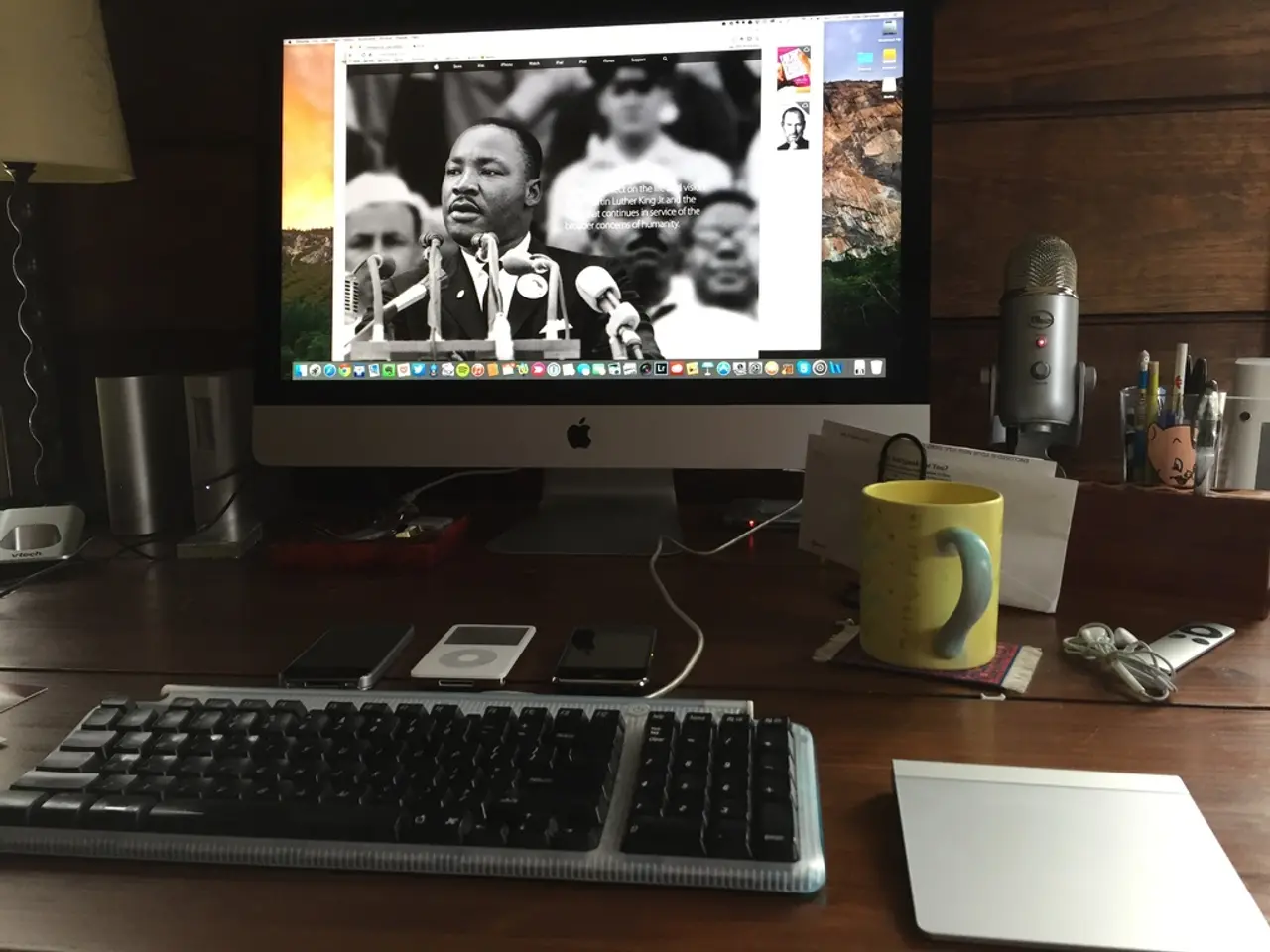Maintaining a High-Quality Viewer Experience Demands Pioneering Effort
Enhancing Video Streaming Quality Across Devices: The Role of Real-time Observability
In the rapidly evolving world of video streaming, ensuring a seamless experience for viewers is paramount. However, this task is not without its challenges. Variability in device capabilities, diverse network conditions, differences in screen sizes and resolutions, synchronization issues, and handling multiple video sources with varying quality and latency are some of the main hurdles [1][3].
To address these challenges, the industry is turning to real-time observability. This approach offers granular, session-level insights into the actual viewer experience, moving beyond relying on backend system averages [2]. It enables providers to monitor key metrics like startup time, buffering frequency, playback resolution relative to device screen size, and error types as they occur.
This level of detailed, instant visibility allows for early detection of anomalies before they affect large audiences. It facilitates fast diagnosis and root cause analysis across different devices, networks, and geographic locations. Additionally, it enables the correlation of quality issues to their sources (network congestion, server problems, device limitations, etc.) [2][4]. Proactive adjustments such as adaptive bitrate streaming or redirecting traffic to optimize quality per device can then be implemented.
By integrating real-time analytics and observability tools, such as Wowza Expert Analytics and StreamGuru, streaming platforms can reduce troubleshooting time, prevent user churn caused by poor video quality, and ultimately deliver a more consistent and engaging experience to viewers on any device [2][4]. This shift from reactive problem-fixing to proactive quality assurance is crucial in meeting the high expectations and limited patience of today's viewers.
Viewers expect seamless playback across various devices, including phones, tablets, smart TVs, and set-top boxes. Unfortunately, issues such as stalled playback, buffering, and inconsistent quality across platforms can quickly ruin the viewing experience, especially with ad playback [5]. Providers need tools that make it possible to track how ads are really performing.
Observability is underutilized in video streaming, with many providers still relying on static dashboards or user complaints to surface problems, creating a lag between failure and resolution [6]. To deliver video in the best possible quality, service providers need to optimize video encoding [7]. Observability enables teams to manage this complexity by monitoring key playback metrics as they occur. Viewer-side metrics such as startup time, buffering frequency, playback resolution relative to screen size, and error types offer far more meaningful insight into real viewing conditions.
In conclusion, real-time observability is a powerful tool in the quest for a seamless video streaming experience across multiple devices. By providing granular, actionable visibility, it empowers streaming teams to proactively address issues, ensuring viewers enjoy high-quality, uninterrupted content.
- The role of real-time observability is essential in enhancing video streaming quality across devices, especially as the industry evolves.
- Real-time observability offers granular, session-level insights into viewers' actual experiences, going beyond relying on backend system averages.
- With real-time observability, providers can monitor key metrics like startup time, buffering frequency, playback resolution, and error types in real-time.
- By early detecting anomalies with real-time observability, streaming providers can make proactive adjustments like adaptive bitrate streaming or traffic optimization.
- To deliver video in the best possible quality, service providers need to optimize video encoding and manage this complexity with the help of observability.
- Observability is underutilized in video streaming, with many providers still relying on outdated methods like static dashboards or user complaints, leading to a delay between problem identification and resolution.
- In order to meet the high expectations of today's viewers, who demand seamless playback across devices, providers need to leverage real-time observability tools for proactive quality assurance, data-and-cloud-computing, and technology integration.




